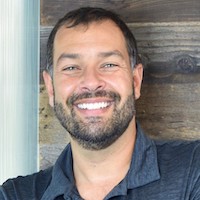Get in line: developing in-process analytical tools for gene therapy applications
Cell & Gene Therapy Insights 2021; 7(1), 23–32
10.18609/cgti.2021.006
Q What is variable length technology, and how is it different from other instruments on the market such as Raman and in-line refractometers?
RS: Variable pathlength technology (FlowVPE) is a subset of UV absorbance spectroscopy. It uses a precision linear stage to change the pathlength of the absorbance measurement, and creates a regression of absorbance versus pathlength.
This allows you to avoid sample prep – namely dilution of samples – and the error associated with it. It also provides an opportunity to take a direct measurement in-line, and use it as a process analytical technology (PAT) tool.
We like to call it slope spectroscopy. Instead of taking a single absorbance reading, the linear regression improves the robustness by taking multiple readings. Our in-line instrument can do this in five seconds, and this gives you a high quality measurement of concentration versus time for any purified material during the process.
It is quite different from things like Raman, refractometers, or densitometers. It is very direct, easy to understand, and simple to implement. Raman is a very powerful technique, and it has the ability to look at many different parameters, but you need to understand it well. Variables such as probe tip geometry, calibration, and how you analyze the data, can affect your measurement and therefore the quality of the data you get. Whereas with absorbent spectroscopy it is very straight forward.
Something like a refractometer, in my opinion, is a bit sensitive for a concentration measurement. Factors such as temperature, density, and other buffer conditions can affect the outcome, and you have to properly calibrate that ahead of time to ensure you get a quality measurement.
JW: A refractive index probe is sensitive to matrix, to the point where if you are doing inline monitoring and the matrix is changing – as it often is in bioprocessing – you cannot obtain highly accurate protein concentration monitoring. It is only accurate, or in other words within 5% of the true value, when the matrix is not changing. This is my understanding as to why RI technology has not widely adopted to this point.
One of the major advantages of VPE is that it requires no specific model and is matrix insensitive. Each protein has its own ideal setting on the VPE to achieve best accuracy, but in general, you can use the platform method and be within 5% of true concentration. That is one of the biggest advantage of VPE: it is very quick to set up for any biologic (protein drug).
Q Jay, with regards to process analytical technologies, and in-process control testing, what led to your team exploring new technologies for protein concentration?
JW: We started using FlowVPE technology several years ago because the technology was analogous to the SOLOVPE, which has been in widespread use throughout the industry for over a decade.
One reason we implemented it was because of a trend in increasing in protein concentration for a drug substances. The previous range of drug substance concentration was 5-50 g/L. Based on technology allowing for subcutaneous injection the DS concentrations increased manifold, to over 100 g/L. This is a trend where the biopharma industry is pushing the limits of how much protein drug you can put into a single dosage in a small volume and eliminate the need for IV transfusions, at least for some drugs. As protein concentration increases there is less room for error because we are near the point where precipitates can form. The final step in mAb drug substance manufacturing, the downstream ultrafiltration and diafiltration operation, is the process where we have used the FlowVPE as a development tool.
Another consideration was to implement a semi-continuous process for biologics manufacturing. Before final DS formulation an offline measurement is required, and this can take several hours fora QC group using the traditional cuvette and A280 method. It is not truly continuous process, which no one to my knowledge is using for GMP manufacturing of biologics now. Our team created a hybrid process incorporating elements of continuous manufacturing to streamline the process. The cadence between batches can be halved using these improvements along with PAT incorporated into the control strategy.
Q A risk mitigation strategy is key to a control process. How does Bristol Myers Squibb approach the overall strategy, and how does process analytical technology play a role in that strategy?
JW: PAT is a major evolutionary step forward in bioprocessing, and companies are adopting it based on its potential for return on investment. Because of so many uncertainties and unknowns for so long on how much investment is required to get this into a GMP space, change has not been as rapid as first anticipated. . There has to be a really strong reason to make a change that can increase efficiency while also improving batch to batch consistency and quality, before biopharma buys into the promise of PAT
However right now, in terms of data analytics and process monitoring, it is going to be valuable without needing to be used in the control strategy.. The industry consensus is that this inline VPE instrument will be relatively simple to put into GMP, for a PAT technology.
At what point of the development process is it important to establish your in-line analytics plan?
JW: In-line analytics really has to be tested extensively at bench scale then in a pilot scale facility before you move to GMP. When you start your validation, you want to have already performed many engineering runs to establish robustness and do a real time risk assessment.
As I’ve mentioned before, the FlowVPE is that it is a platform tool that can used across an entire portfolio. Therefore the return on investment into development of this instrument can be justified, because it is going to be used throughout the portfolio.
RS: I have seen a lot of these implementations happen, and in my experience there is no real right place to put it. There are areas or times during the development where it is easier and more straightforward to do it, but I have seen people put this kind of tool directly into the commercial process. It does take a little extra work and validation time, but it can be done. Or like Jay said, I have seen people go through development then put it into the clinical process.
With regards to cell and gene therapy, there is an opportunity to put it in, because the modality is pretty new, and a lot of these manufacturing areas are being built. When you are starting the implementation of a manufacturing site, this is the perfect time to look at PAT and bring it into a plant.
Q What validation is required to introduce an in-line analytical measurement system?
JW: We have an established precedent with the SoloVPE, a very similar instrument, and gives a good starting point to design a validation study. However, it requires some creativity to design a validation, because it is an inline instrument.
The hardware validation, specifically of the flow cell, is incredibly important, because the flow cell has to have very low bioburden. The industry now uses mainly single use hardware, so if a single use flow cell can be developed that will make validation simpler.
Another important area of validation is the software. Clearly the software must be CFR-compliant for use in a GMP facility..
Q What team members and experts are involved in the decision making process? Where are the in-line testing strategies developed, and when are they implemented?
JW: It requires a large cross functional team to develop PAT.
PAT implementation into GMP is something that is still evolving, and the entire industry and regulatory authorities are working on the roadmap. The strategy really developed from the bottom up: from bench to pilot to GMP scale. At each point in the process more stakeholders have become involved and sharpened the strategy
Q What process analytical tools or methods show the greatest promise in both upstream and downstream applications?
JW: In-line liquid chromatography has a lot of promise but also complexities. The hurdles are greater because of the validation process and how many moving parts are part of that PAT technology, including the autosampler. In terms of the potential value of the data to the process, it is high.
There are other in-line probes with high potential for PAT applications, with FTIR and Raman the hottest technologies right now.
Q What BMS learnings should a gene therapy manufacturer take into consideration when developing their in-line testing strategy?
JW: Perform extensive offline analytical testing for comparability, to ensure the inline method is robust and accurate. The hardware has to of be the right dimensions for the process. If you need some custom sizing application, you should start working with the inline probe vendor right away and tell them your needs.
Do not underestimate the validation procedure for flow cells. I would start looking into this early in the process sand figure out your needs. If you do not need single use, it may be more economical to use stainless steel flow cell. But start figuring out the validation procedure to sanitize inline as early as possible, as that can be the most time consuming part of GMP validation.
Gene therapy developers are using a lot of the mainstream analytical solutions such as monoclonal antibody solutions, simply because there aren’t many analytical solutions specific to gene therapy. Would the same FlowVPE system benefits apply to gene therapy manufacturers?
RS: Gene therapy is an exciting and accelerating field, and it is natural to apply technologies from the mainstream, such as MAB production.
We are still understanding where the VPT, or variable path link technology, can be applied in this area. We have had some good preliminary data. In theory, the FlowVPE, or slope spectroscopy in general, should give all the same benefits in gene therapy manufacturing as it would in MAB manufacturing. The straightforward and easily validatable method, the robustness of the data, repeatability of the method, and the relative ease of use and implementation should all apply.
There are differences I see between MABs and gene therapy. In gene therapy the value of the product is extraordinarily high; it is expensive, and needs to be better tracked. That lends more strength to the argument of using PAT to improve the quality and process time. It is also a new industry where new manufacturing plants are being built, and this is the perfect opportunity to put in PAT. I predict it will make it a little bit easier to validate some of these things, in comparison to the MAB field where they already have established technologies you may have to displace in order to put something new in.
Q Have you seen process analytical technology successfully implemented in a gene therapy process as yet?
RG: The short answer would be not much, if at all. I think this is because there is still a lack of knowledge and characterization of gene therapy products.
PAT is part of the global quality by design initiative. Applying PAT means you have already defined your target product profile (TPP) that is informing on the product’s critical quality attributes. You are able to then define the critical process parameters that you would have to measure, monitor, and control, to make sure that your process is running well, and your product quality is kept within the defined acceptable range.
We are just not necessarily there yet with a lot of gene therapy products. The viral vectors injected into the patient, or in the case of CAR T therapies the modified cells infused into the patient, are much more complex products than the recombinant proteins and monoclonal antibodies that have been used now for decades.
A better, or deeper, characterization is required for gene therapy products – for example, the route of administration, the dosage, the tissue specificity, and so on. Then, the implementation of PAT will make sense in the context of the manufacturing processes.
There are many ongoing developments with the hundreds of clinical trials currently underway, and this makes us learning very fast in this context. Along with the experience acquired from previous developments in MABs and recombinant proteins, this will accelerate the learning phase.
We see a major focus on developing robust and reliable analytics in the gene therapy field. PAT will become more and more present in this context, as we learn more and advance into this knowledge space.
JW: No I have not, but gene therapy is an emerging field where I anticipate PAT applications will have a significant impact. It is arguably easier to incorporate PAT into new manufacturing processes like those used in gene therapy than fit into an older existing process.
Q Where is process analytical technology being implemented in the gene therapy workflow? What are the essential process measurements currently identified?
RG: As I mentioned, PAT is not extensively implemented. Mostly in the sense that we see PAT as an in-line tool, for in-line analytics, but in reality, the current measurements that are used for gene therapy processes are almost entirely performed offline. For instance, the qPCR and ELISA used for product quantification, the electronic microscopy used for product characterization, or the flow cytometry used to indicate the product activity – all of these measurements are performed offline. With, I would add, quite low precision and accuracy, or long turnaround times in some cases.
Having said that, there is some PAT used for plasmid and viral vector manufacturing processes. I am thinking here about the standard sensors that we use in the process like pressure, temperature, pH, conductivity, and UV. These are PAT tools that are used in the context of the UF/DF product concentration and formulation steps.
In the purification steps with chromatography, UV spectroscopy is a critical tool to first develop a robust separation and purification process, and is being applied to monitor the process at clinical or commercial manufacturing scale. These are the unit operations where we see some PAT already used in gene therapy processes.
Q René, based on what we have heard from Jay and Ramsey, how do you think that slope spectroscopy technology could benefit gene therapy?
RG: Slope spectroscopy is a UV-VIS spectroscopy method, and I see an obvious use for it where the same, or similar, UV spectroscopy methods are used already.
The obvious question then would be, what for? What would be the added value compared to the existing sensors or measurements? As Ramsey mentioned, the standard UV method is often limited by the saturation of the signal as the product concentration goes up. We see this a lot for plasmid DNA processes. With slope spectroscopy, the user could use the SoloVPE to measure the product concentration without the need to dilute the sample. Then we can think about in-line measurement with the Flow VPE, and being able to plug the sensor in-line with the TFF skid when we do the UF/DF steps in the process. That would be an obvious need.
I see slope spectroscopy as giving us an extra dimension, or I should say an extended dimension, in which to apply UV spectroscopy. It creates a much bigger design space to explore and look at where to use this extended capability. We are working with selected partners to investigate that extra space, and are already collecting some very promising data.
It is too early to communicate extensively on this, but we are at the beginning of the story of implementing spectroscopy in the gene therapy processes. There is a lot to explore, and lot of potential.
The FlowVPE System uses patented variable path length technology to accurately measure various targeted concentration in the process stream (in-line). For more information on the FlowVPE, please click here
Authorship & Conflict of Interest
Contributions: All named authors take responsibility for the integrity of the work as a whole, and have given their approval for this version to be published.
Acknowledgements: None.
Disclosure and potential conflicts of interest: R Gantier is an employee of Repligen. R Shanbaky is an employee of C Technologies Inc. - a Repligen company and in addition, R Shanbaky has a patent null pending. The authors declare that they have no other conflicts of interest.
Funding declaration: The authors received no financial support for the research, authorship and/or publication of this article.
Article & copyright information
Copyright: Published by Cell and Gene Therapy Insights under Creative Commons License Deed CC BY NC ND 4.0 which allows anyone to copy, distribute, and transmit the article provided it is properly attributed in the manner specified below. No commercial use without permission.
Attribution: Copyright © 2021 C Technologies, Inc. - A Repligen Company. Published by Cell and Gene Therapy Insights under Creative Commons License Deed CC BY NC ND 4.0.
Article source: This is a transcript of a recorded podcast, which can be found here.
Interview conducted: Dec 21 2020; Publication date: Feb 10 2021.





